9 Vampire Books That Every Adult Should Read
A vampire is usually an undead creature that feeds off the blood of the living. The characteristics of vampires differ in each interpretation of them. Often they use fangs to feed on their victims and are weakened or physically harmed by the sun. Most have pale skin and some form of supernatural ability but these abilities and the physical appearance diverge to create a vast range of vampire types.
The vampire myth has been rampant in Europe especially for centuries. The word vampire most likely originated in Eastern Europe. The belief in vampires seems to stem from death that could not at the time be explained. Death and plagues were common throughout the Middle Ages and many deaths in a concentrated area were put down to supernatural causes.
The vampire became a way to understand what could not be understood. There was no science in this period to explain what happened to the dead, only the tales that were created and passed on through folklore. Bodies of the dead were dug up to check for signs of decomposition.
Due to the lack of scientific advancement in this period, people who were sick or unconscious were often buried as they were thought to be dead. They would then appear to come back to life after already being buried. This could be one reason that the vampire legend was created but there are many other myths from different regions that contribute to the vampire's creation.
What makes the vampire special and still so prominent within Literature are its adaptability and versatility. The vampire constantly creates new versions of itself that fit with its modern audience. This means that the vampire in Literature is a great way to learn indirectly about society at the period that the book was written or set.
We can use the idea of the vampire over and over again to explore new societal fears and taboo subjects meaning that the vampire can never be overdone. What makes this list of vampire books stand out the most to me is how each vampire is represented and how that reflects on the audience of the time.
Here are the 9 vampire books that every adult should read:
1. Dracula by Bram Stoker
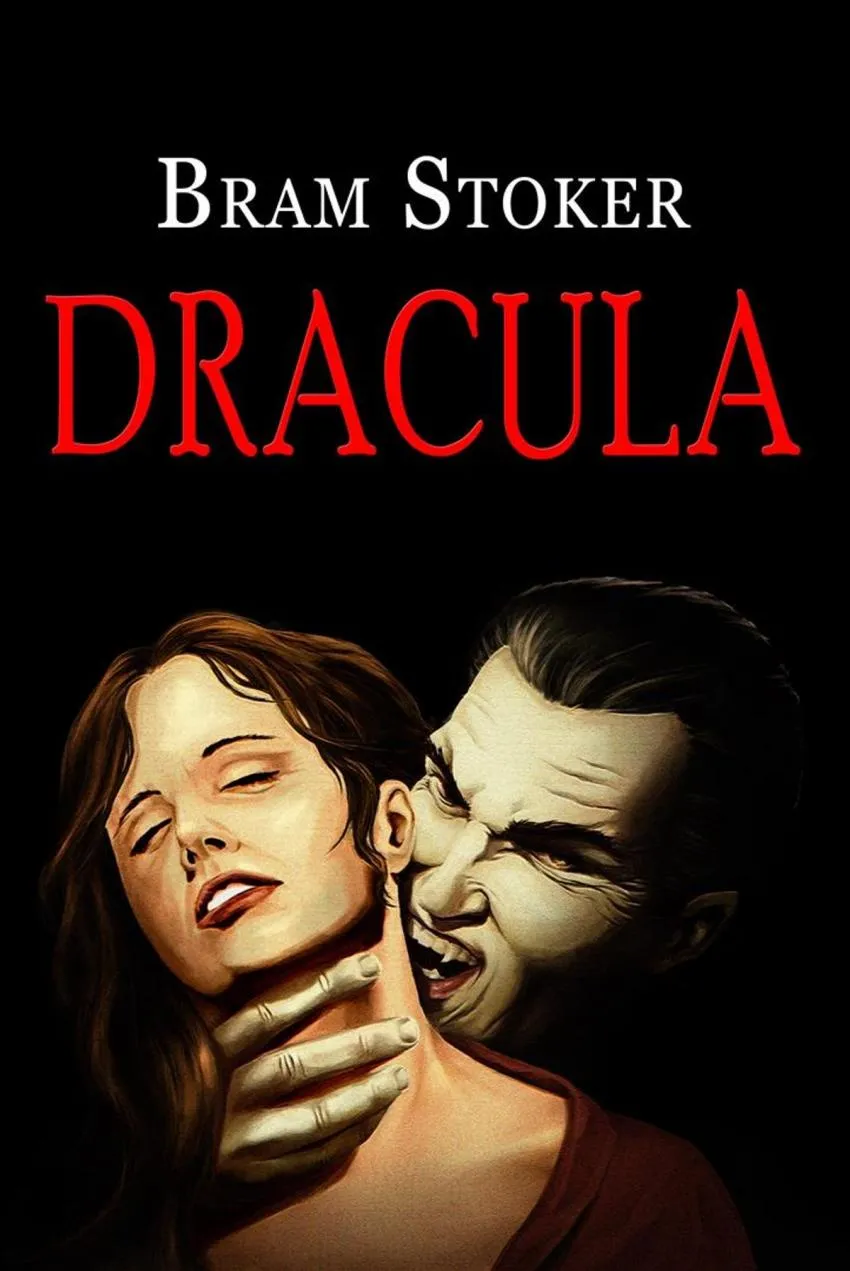
In Bram Stoker’s novel Dracula (1897), The strange Count Dracula meets Johnathon Harker to finalize his property acquirement in England. As Johnathon realizes he is a prisoner of the count, he must try to find his way out and home to England to stop the monster that has been unleashed on the country and Harker’s Fiancée, Mina.
Dracula is a classic vampire novel and is the archetype that the modern vampire emerges from. We have seen dozens of recreations of this iconic character in fiction, films, television, and more. A vampire novel with this much influence is worth a read.
The tale has been changed over time in so many different ways. The only way to see how this has happened is the read the original. Dracula was never meant to be the love story that we see in the movie Bram Stoker’s Dracula starring Gary Oldman.
He is a character to be feared, not only for bringing death but also for the immortal soul's destruction. Though there are elements of sexuality, Dracula is not the charismatic bloodsucker we have come to expect. He is a manifestation of fear. Above all the book is a clear fight between what is portrayed as good and evil.
This book is especially interesting for what it shows us about societal fears around the time Stoker was writing. We can see how fears of female sexuality, immigration, and disease affect the narrative. We are not only reading a fictional story but also having a glimpse back in time through a distorted lens.
The book seems to relate to real-life historical figures, as it is believed that Count Dracula was based on Vlad Dracula, also known as Vlad the Impaler. The real-life Vlad was born in Transylvania and earned his nickname due to his tendency to impale his enemies on a wooden stake which would seem to relate to how a vampire can be killed with a stake to the heart.
2. Interview with the Vampire by Anne Rice
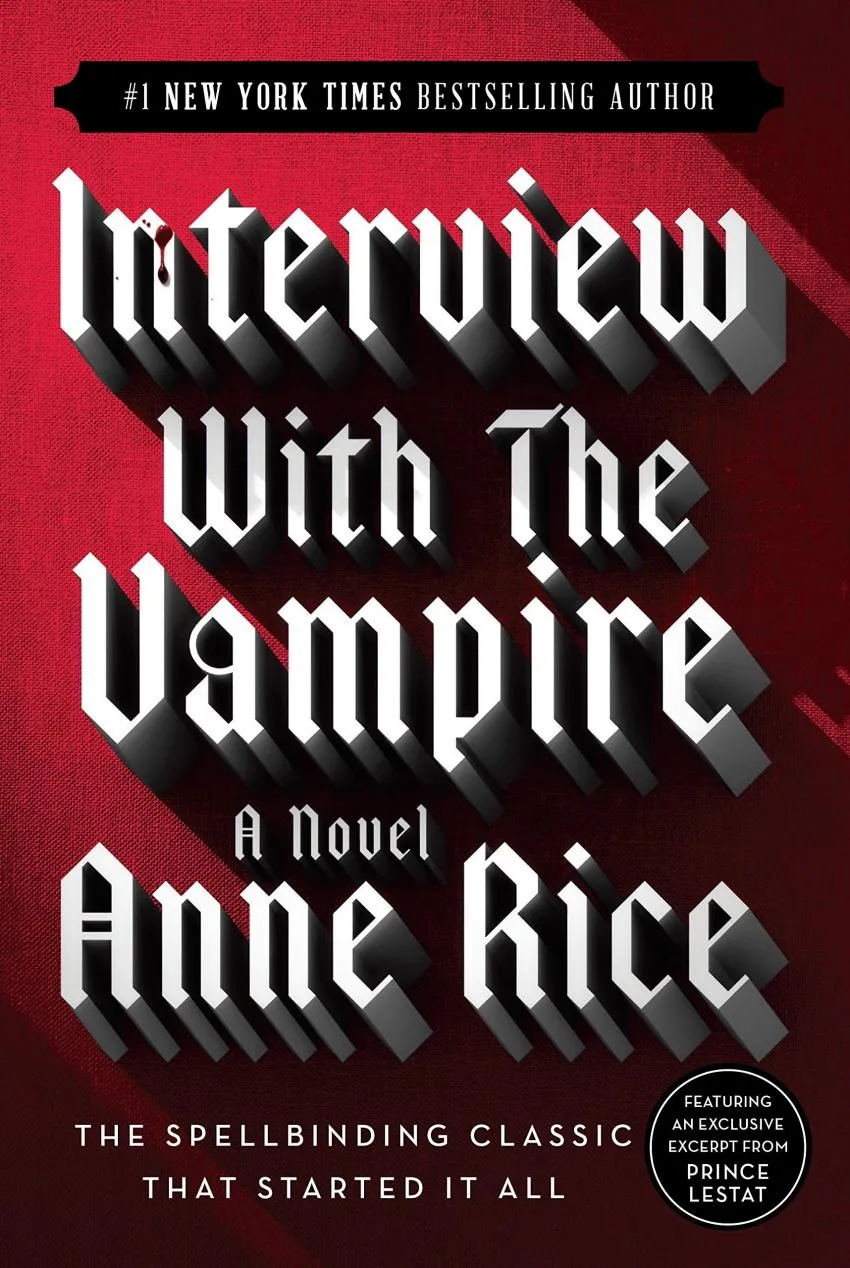
Anne Rice’s novel revolves around the vampires Louis, Lestat, and Claudia. The three portray a dysfunctional vampire family, with Claudia essentially being the child that keeps a partnership on the edge of dissolution together. Louis tells the story of his life to a reporter, from becoming a vampire to the later years living with Claudia and Lestat.
This novel is great for exploring what it means to be a vampire and what it means to be human as each mirrors the other. Louis is a vampire with a conscience, unlike many other vampire stories before its time. This allows the book to explore some very human issues from the viewpoint of a non-human.
The book inspired a lot of fanfictions due to its heavily sexualized content and inferences. It was also one of the first, and one of the most popular novels, to reference homosexuality so openly which George E. Haggerty speaks of in his study of Anne Rice and the Queering of Culture. I researched for my dissertation and found this book to be great for looking into taboo sexuality as well as just being an all-around entertaining read.
What is also different about this book is that the relationship in Interview with the Vampire is between two vampires, unlike in Twilight and The Southern Vampire Mysteries which I will also discuss in this article.
What seems to be quite unique about this tale is that the story comes entirely from the vampire's perspective so we get to see the thoughts and feelings of the vampire in a way that humanises and allows us to empathise in a way the reader is often unaccustomed to. Even in later novels where we are presented with the 'good' vampire with a conscience, we do not specifically see this from the vampire's point of view making this book quite a unique experience for the reader.
3. Carmilla by Joseph Sheridan Le Fanu
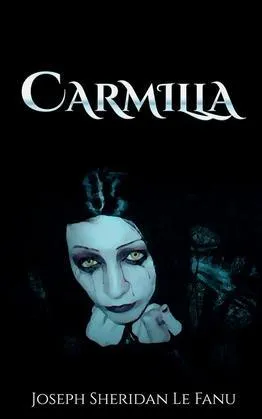
In Le Fanu’s tale, Laura lives in seclusion with her widowed father. Carmilla, a young girl who is in a carriage accident while with her mother, is left behind in the care of Laura’s father. The story follows the relationship between Laura and Carmilla and how Laura is both repulsed and drawn to her simultaneously. Many young girls in the area have become sick since Carmilla has appeared and Laura herself becomes sick too.
Carmilla, who it becomes clear is Countess Mircalla using a clever anagram of her name, is a vampire from the ruins of Karnstein, a village that was attacked by vampires and left to ruins.
As one of the early works of vampire fiction, this book is worth a look. The book even predates Dracula. There are similarities between this novel and Interview with the Vampire in that both books hint at the idea of taboo sexuality. Homosexuality in this case is directed towards two female protagonists rather than two males.
The closeness that develops between Carmilla and Laura calls into question the nature of the vampire. It is unclear whether Carmilla is close to Laura purely just to gain easy access to her next food source or whether Carmilla is looking to bond and create a friendship with another female. Later in the story, Carmilla seems to argue for her right to exist much like any other species making the reader think about the relationship between species of predator and prey.
The story is a mix of Gothic and authentic vampire folklore. There is not necessarily a vast amount of action but that does not stop this from being a very interesting novel with an extensive weight of subtext.
4. Twilight by Stephenie Meyer
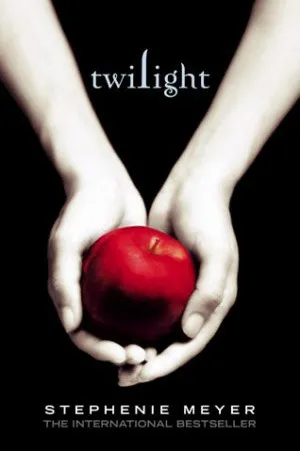
The story of Twilight centres around Bella Swan, a young girl who has just moved to Forks, Washington to live with her father. At school, she meets Edward Cullen, a boy with a secret she longs to learn.
When Bella learns that Edward is a vampire, she is attracted by this rather than repulsed. Stephenie Meyer challenges the predator and prey dynamic with a new kind of unlikely love story. Vampires have changed from the scary monsters of the night to creatures featured in teen fiction, something to be wanted and admired rather than feared. They can even walk in the sun! The vampires in this book are not completely other species, but one that is only slightly different from humans.
Twilight is a very interesting read to see how the representation of vampires has changed from the dark and terrifying vampires of old to the new sexy and seductive vampire. This can be linked back to the changing societal fears. Vampires are changing to look more and more human showing that people no longer know who or what to be afraid of. Something that looks innocent and beautiful can be deadly.
Twilight is such a popular book series for a reason. If you have seen the movies and loved them the books are even better.
5. The Southern Vampire Mysteries (The Sookie Stackhouse novels) by Charlaine Harris
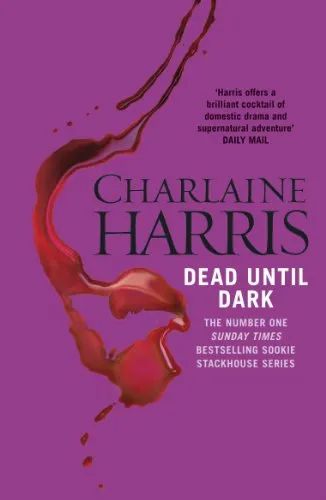
This is not just one book I am recommending here, but a series. These books were the inspiration for the TV show True Blood, but after the first couple of books, the plot varies from the show extensively.
The books take the idea of the new sexy and seductive vampire to a whole new level. These books I would only recommend for an adult audience due to the amount of explicit sexual content. For anyone who has watched True Blood, you already know what you are in for.
Sookie Stackhouse is a waitress in a bar in a small town in Louisiana. She is a normal girl with one big difference, she can read minds. One day, someone comes into the bar whose mind she cannot read. That person just happens to be Bill Compton, the town’s first vampire resident.
In this series, vampires have revealed their existence to the world claiming that they no longer need human blood to survive as they have created a blood substitute. This is a compelling concept. Most vampire stories involve them being hidden from the world feeding on their prey in the shadows. The world knowing that vampires do exist provides a whole new storyline for the vampire genre.
These vampires have a mask of innocence that they portray to the world but these books get down into the dark hidden underbelly of the vampire species that the vampires would like humans to believe no longer exists. Also, be prepared to meet a whole range of other supernatural creatures that make these books just a purely entertaining read.
6. Salem’s Lot by Stephen King
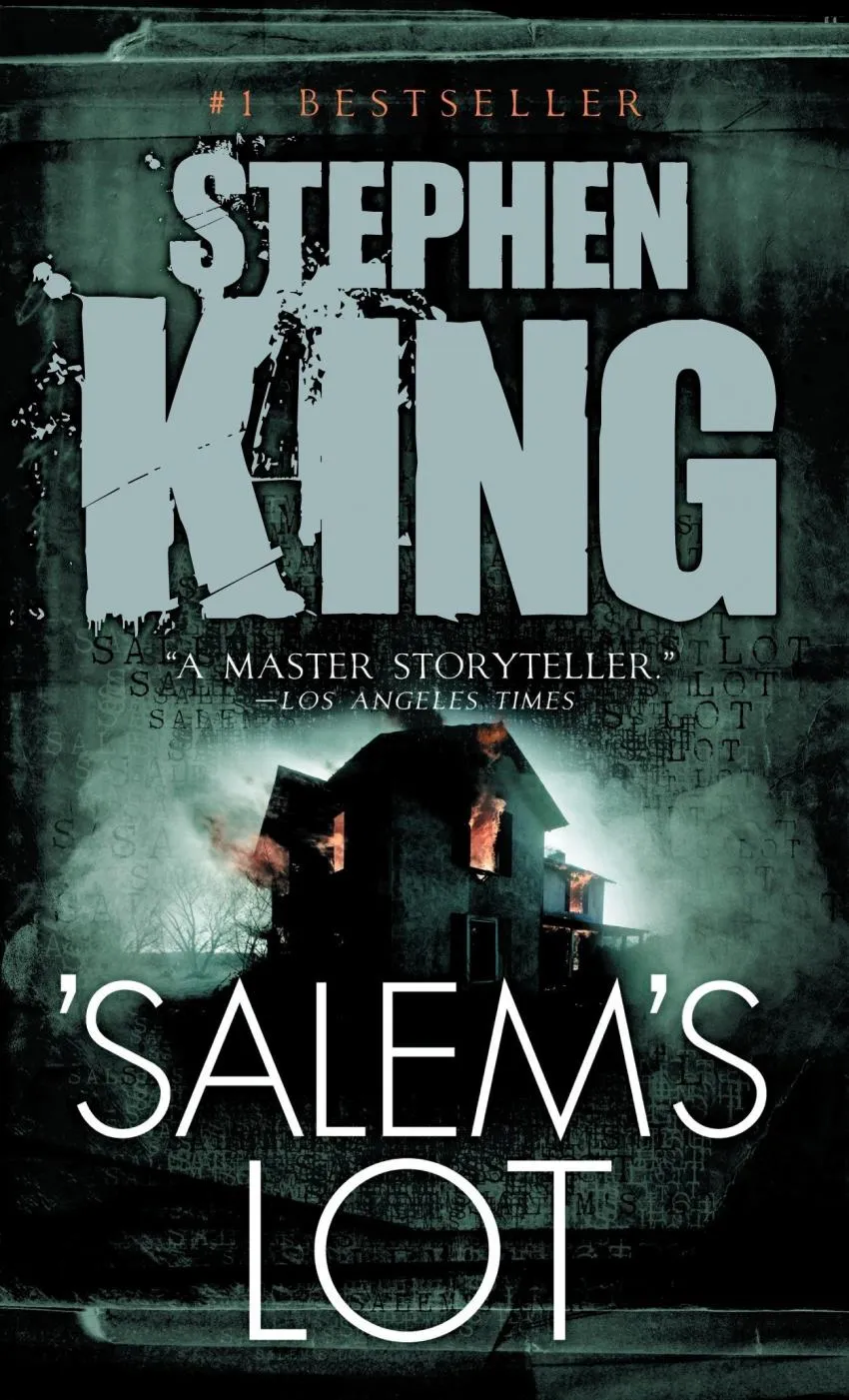
We know Stephen King as a master of the horror genre, and he proves this again with his book Salem’s lot.
Ben Mears returns to his childhood hometown of Jerusalem’s Lot, otherwise known as ‘Salem’s Lot. Ben is a writer, working on a book about an old house he was afraid of in his boyhood. Ben discovers that a vampire has taken residence in the town and begins murdering and turning the townspeople into vampires.
What is truly great about this book is the amount of utter destruction caused by the vampires. Although there is a resolution to the vampire problem by the end of the novel it is not a happy one which differs from many other books where the heroes of the story neatly wrap up the problem. The epilogue of the book implies that the problem is never actually solved, as people in the surrounding areas continually know to avoid the town that was Jerusalem’s Lot. Stephen King uses vampires here as a symbol of chaos and fear and really goes back to the true roots of the vampire legend.
The build-up of suspense that Stephen King creates in his work is unrivalled. Barlow is a terrifying and compelling vampire who truly crushes the spirits of the heroes of the story. The book shows that good does not always destroy evil and that faith is not always a weapon that can be used against a vampire. The use of religious paraphernalia does nothing to stop a real monster.
7. I Am Legend by Richard Matheson
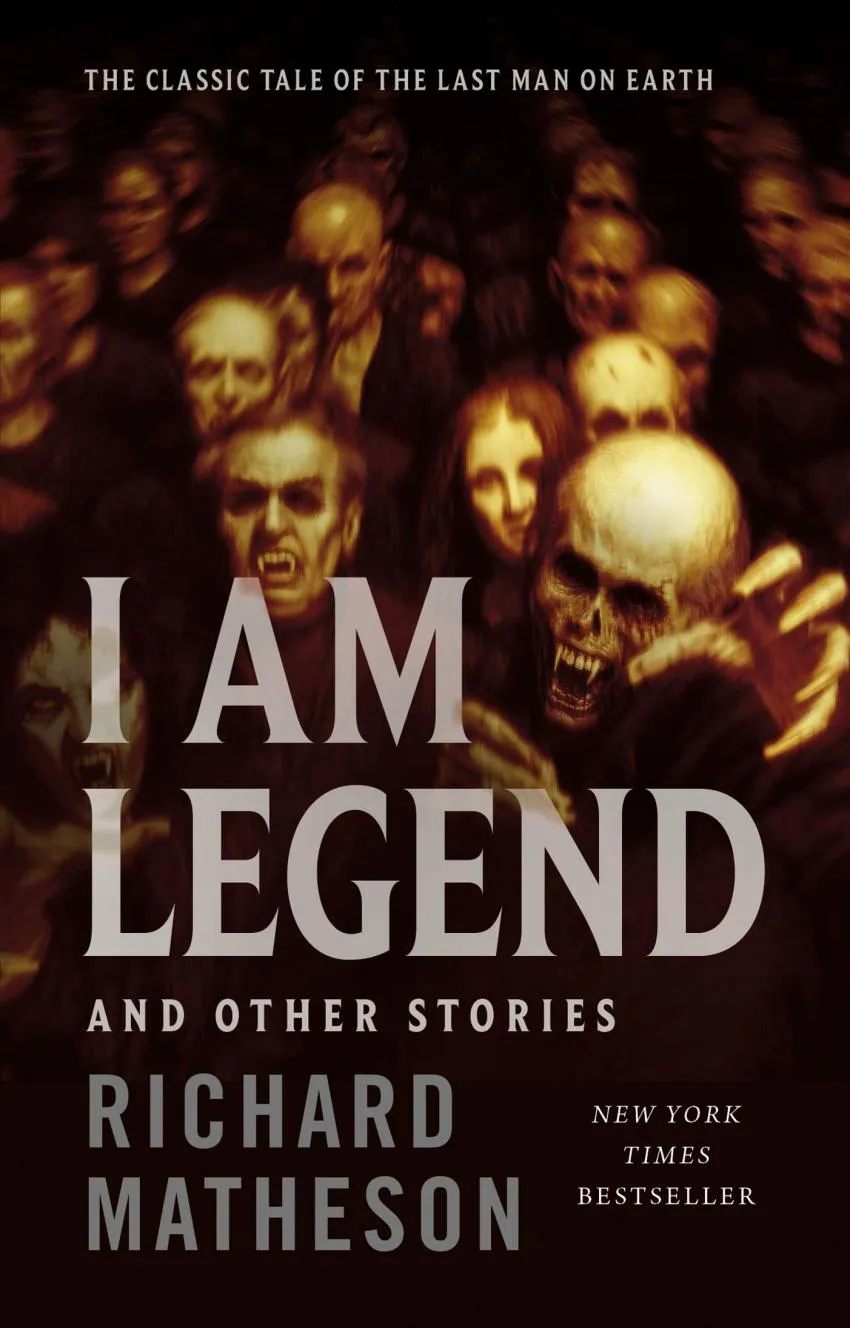
I Am Legend (1954) centres around Robert Neville, who appears to be the only remaining survivor of a disease that has changed the rest of the world into vampires.
Richard Matheson’s book blurs the line between zombies and vampires. The novel influenced the zombie genre which is very clear if you read I Am Legend. At the time, the idea of science being the reason vampires or zombies exist was a relatively new idea, so Matheson created a very original piece of writing that has influenced so many more novels and films alike. The book much more explicitly states that these creatures are vampires than if we watch the film of the same name.
The different types of vampires in the book are also something of particular interest. They differ from mindless monsters to intelligent beings that can start to rebuild their own society.
The vampires in this book are caused by the transmission of bacteria rather than other causing such as biting, so vampirism becomes just like any other disease or virus. It is a great book to read, especially at the present when there is a global pandemic (hopefully this one will not turn us all into vampires!)
Science came along and questioned the nature of life and this is very clearly considered in I Am Legend.
8. Let the Right One In by John Ajvide Lindqvist
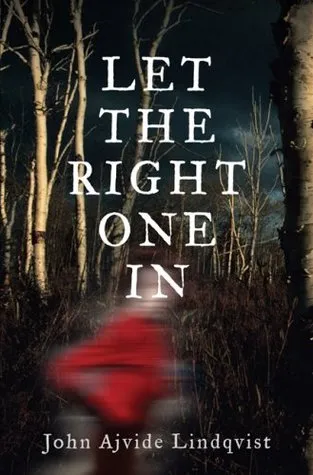
Let the Right One In follows the story of Eli, a vampire that was turned into a child. Eli befriends Oskar, a bullied and lonely child. The story explores the darker side of vampirism as well as providing Oskar with the help he needs to stand up to his bullies making it also a story of friendship.
What is interesting about this story is the uncanny vampire child. Interview with the Vampire also uses this in the character Claudia. As a vampire child, Eli is given an aura of innocence due to the character's outward appearance when in fact Eli is much older than a passerby could ever comprehend.
The story explores the issues associated with this child-like state. This child-like state draws in Håkan, an older human male. Håkan was previously a school teacher that was fired and made homeless after being revealed to be a paedophile.
The relationship between Håkan and Eli is a very strange one that is worthy of looking into. Håkan lives with Eli and kills to bring Eli blood, in return for this he asks to be intimate with Eli. The complexities of their relationship are very taboo as it is obvious that Håkan's sexual appetite for young boys is what draws him to Eli but Eli is only young physically.
Another complex issue that is explored through this story is gender and identity. Eli dresses and is perceived as a female but was actually born male and was castrated and brings into play questions of gender dysphoria and relates very well to modern questions around transgender and sexuality.
9. Fevre Dream by George R. R. Martin
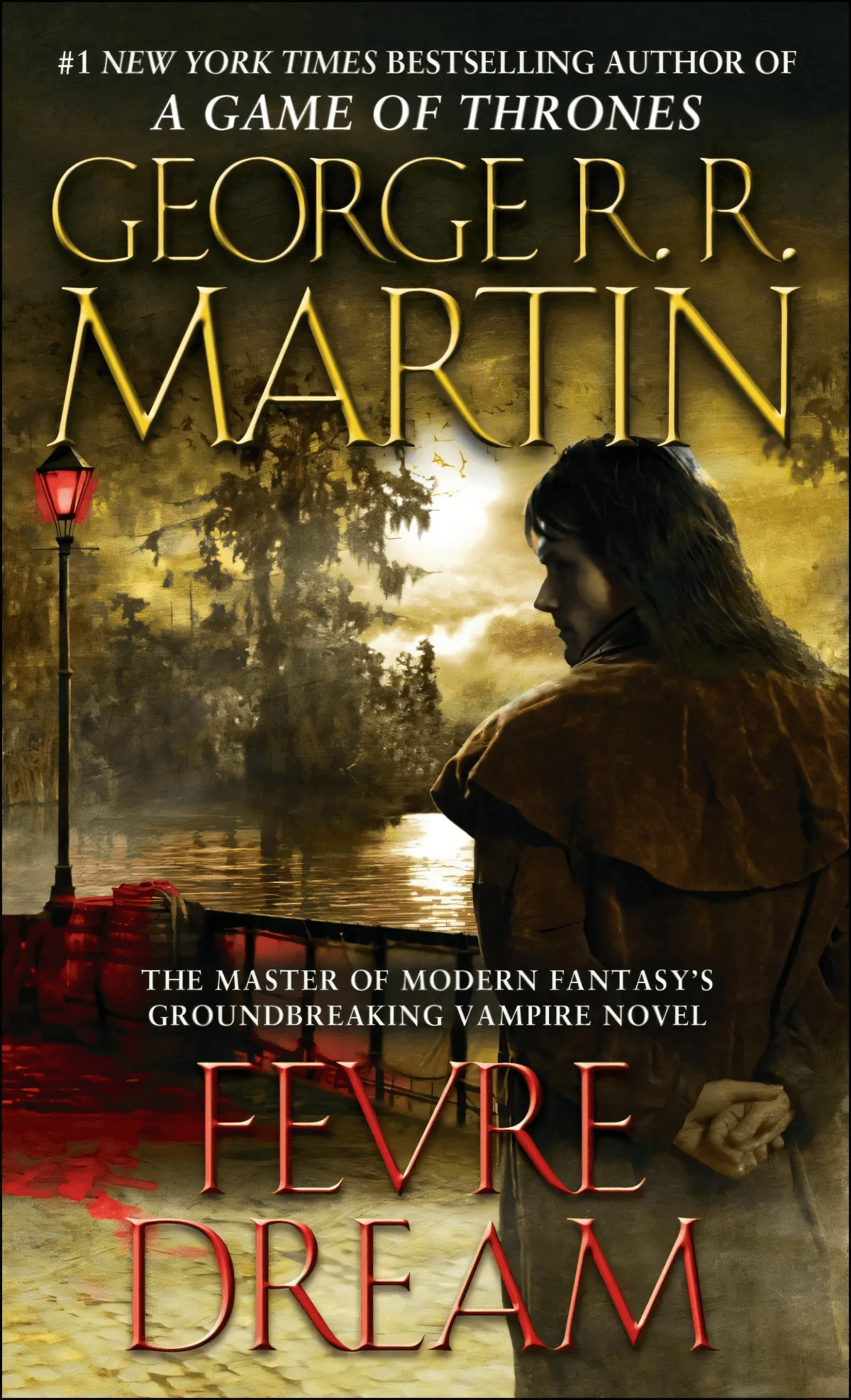
Fevre Dream can be seen as being a cross between Stephen King and Mark Twain due to being a Gothic vampire novel set on the antebellum Mississippi river. The story follows Abner Marsh, a struggling riverboat captain.
A wealthy businessman, Joshua York, presents him with an offer to build him a luxury steamboat in return for deviating off course to attend to Joshua's business with no questions asked. The offer seems too good to be true, but Abner cannot help but accept and becomes entangled in the story of a vampire attempting to redeem his species.
Unlike many other vampire fictions, the vampires in this story rarely procreate leading Joshua to believe that his species is at risk of extinction if they are not to change their ways. This is quite a unique concept as vampires are usually the ones to fear rather than the ones that are afraid.
This novel may be troubling for some readers due to the kind of language used towards people of colour. George R.R. Martin uses the time that the book was set to explore issues of racism that were embedded within society. The attitude that most vampires have towards humans is also very similar to the treatment and attitudes towards black men and women in the novel which seems to me to be a comment on the institution of racism and one race believing that they are superior to another.
It is not only the vampires in this book that are represented negatively. Two characters that are the focus of this negativity seem to be the vampire Damon Julian and his human helper Sour Billy Tipton. Billy is portrayed as just as evil as the vampires, if not worse. Billy is the one who acquires victims for the vampires, actively betraying his own species.
Like I Am Legend, vampires in this novel are represented as more of a scientific creation rather than supernatural as they seem to have evolved alongside humans linking back to how science was exploring the nature of life.
To conclude, the best vampire books explore not only the essence of vampirism but also what is to be human. They take societal issues and explore them in a new and exciting way. Vampires are both alluring and repellent at the same time. More and more versions of these fantasy creatures will continue to pop up in Literature for years to come.
Opinions and Perspectives
Rice's vampires feel so real because she focuses on their humanity rather than just their supernatural aspects.
Started with Twilight, but these other recommendations have opened up a whole new world of vampire fiction for me.
Each of these books brings something unique to vampire lore. That's what makes this genre so special.
The way Let the Right One In handles friendship is beautiful. Such a unique take on vampire mythology.
Just started the Southern Vampire Mysteries. The world-building is really impressive.
It's interesting how many of these deal with isolation. Vampires are eternal but often so lonely.
Rereading Interview with the Vampire and noticing so many details I missed the first time around.
Love how these books span different time periods. You can really see how vampire stories evolved with society.
The Scientific approach in I Am Legend and Fevre Dream really modernized vampire fiction.
What interests me most about vampire fiction is how it deals with immortality. The psychological toll of living forever is fascinating.
Reading I Am Legend right now. The isolation Neville feels is so well written, really gets under your skin.
I'm amazed at how each author finds a new angle on vampire mythology. Just when you think it's all been done before.
The religious symbolism in Dracula is fascinating. Really shows how faith and superstition shaped vampire mythology.
Never understood why people compare Twilight to classic vampire novels. They're trying to do completely different things.
The psychological aspects of Let the Right One In really got to me. Such a deep exploration of loneliness and friendship.
You know what I love about vampire books? They can be horror, romance, or social commentary. So versatile.
It's amazing how many different interpretations of vampires we've seen over the years. From Dracula to Edward Cullen, they keep evolving.
What I love about Salem's Lot is how King makes vampirism spread like a disease through the town. It's so methodical and terrifying.
The way Carmilla plays with gender roles is fascinating. Pretty progressive for its time.
Anne Rice really changed the game by telling the story from the vampire's perspective. Made them relatable in a whole new way.
I think people are too hard on Twilight. Sure it's different, but it introduced a whole new generation to vampire literature.
Just finished Interview with the Vampire. The way it explores immortality and loneliness is incredible.
Fevre Dream's historical setting really sets it apart. The vampire story works so well against the backdrop of the American South.
The Sookie Stackhouse novels are my guilty pleasure. They're not high literature but they're so much fun to read.
Reading Dracula now and surprised by how well it holds up. The epistolary format makes it feel so immediate and real.
Let the Right One In handles complex themes so well. The ambiguity about Eli's true nature adds such depth to the story.
Agree about I Am Legend. It bridges the gap between classic horror and science fiction in such a clever way.
The scientific explanation for vampirism in I Am Legend was ahead of its time. Really changed how horror stories could be told.
True Blood books are way better than the show. Harris created such a rich world of supernatural creatures.
Love how I Am Legend completely flips the script. Making the last human the monster was brilliant.
Salem's Lot scared me so much I had to sleep with the lights on. The scene with the boy at the window still haunts me.
Makes sense that vampire stories focus on class. Blood-sucking aristocrats is a pretty obvious metaphor when you think about it!
Anyone else notice how vampire stories often deal with class issues? From Dracula to the Cullens, they're usually wealthy and powerful.
Interview with the Vampire really humanized vampires in a way that hadn't been done before. Louis's guilt and moral struggles were revolutionary for the genre.
Carmilla's subtle approach to sexuality was groundbreaking for its time. Le Fanu managed to write about taboo subjects in a way that got past Victorian censors.
The evolution of vampires from monsters to romantic leads says a lot about how society has changed over time.
I find it interesting how vampire stories reflect the fears of their time. From Dracula's Victorian anxieties to modern environmental concerns in some newer works.
Trust me, the book version of I Am Legend is WAY better than the movie. The ending especially has a completely different meaning.
Been meaning to read I Am Legend forever. The movie was so different from what I've heard about the book.
I actually learned a lot about Victorian society from reading Dracula. The fears about foreign influence and women's sexuality are fascinating from a historical perspective.
The Southern Vampire Mysteries are pure entertainment. Not as deep as some others on the list, but sometimes you just want a fun vampire story.
Does anyone else think Carmilla deserves more recognition? It came before Dracula and tackled themes that were way ahead of its time.
Fevre Dream is fantastic! If you like historical fiction mixed with vampires, you'll love it. Martin's writing style really brings the Mississippi riverboat era to life.
I've read all these except Fevre Dream. Anyone here read it? Worth picking up?
Let the Right One In is seriously underrated. The relationship between Eli and Oskar is so complex and heartbreaking. Really makes you think about loneliness and friendship.
Salem's Lot terrified me! King really brought back the horror element that had been missing from vampire stories. The way the whole town slowly succumbs is chilling.
Interview with the Vampire was my gateway into vampire literature. Louis's internal struggle really made me think about mortality in a new way.
Actually disagree about Twilight. I think Meyer's take was refreshing. She showed how vampire mythology could evolve to speak to modern audiences. Different doesn't mean worse.
Never really got into Twilight myself. I think it took away what made vampires interesting in the first place. They're supposed to be dangerous creatures of the night, not sparkly teenagers.
I absolutely love how Dracula set the foundation for vampire literature. The way Stoker played on Victorian anxieties about sexuality and immigration was brilliant for its time.
